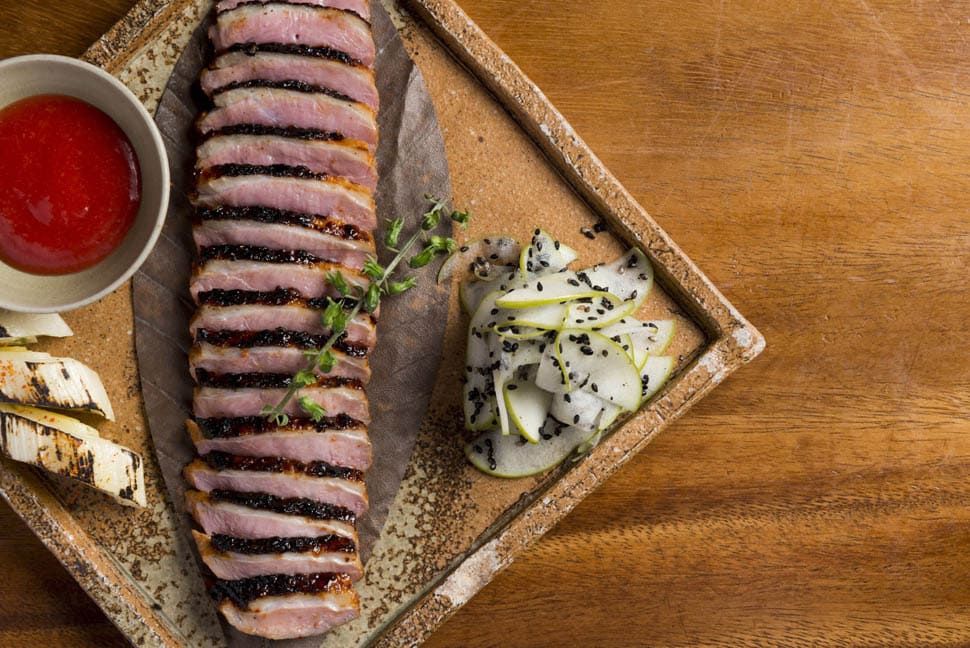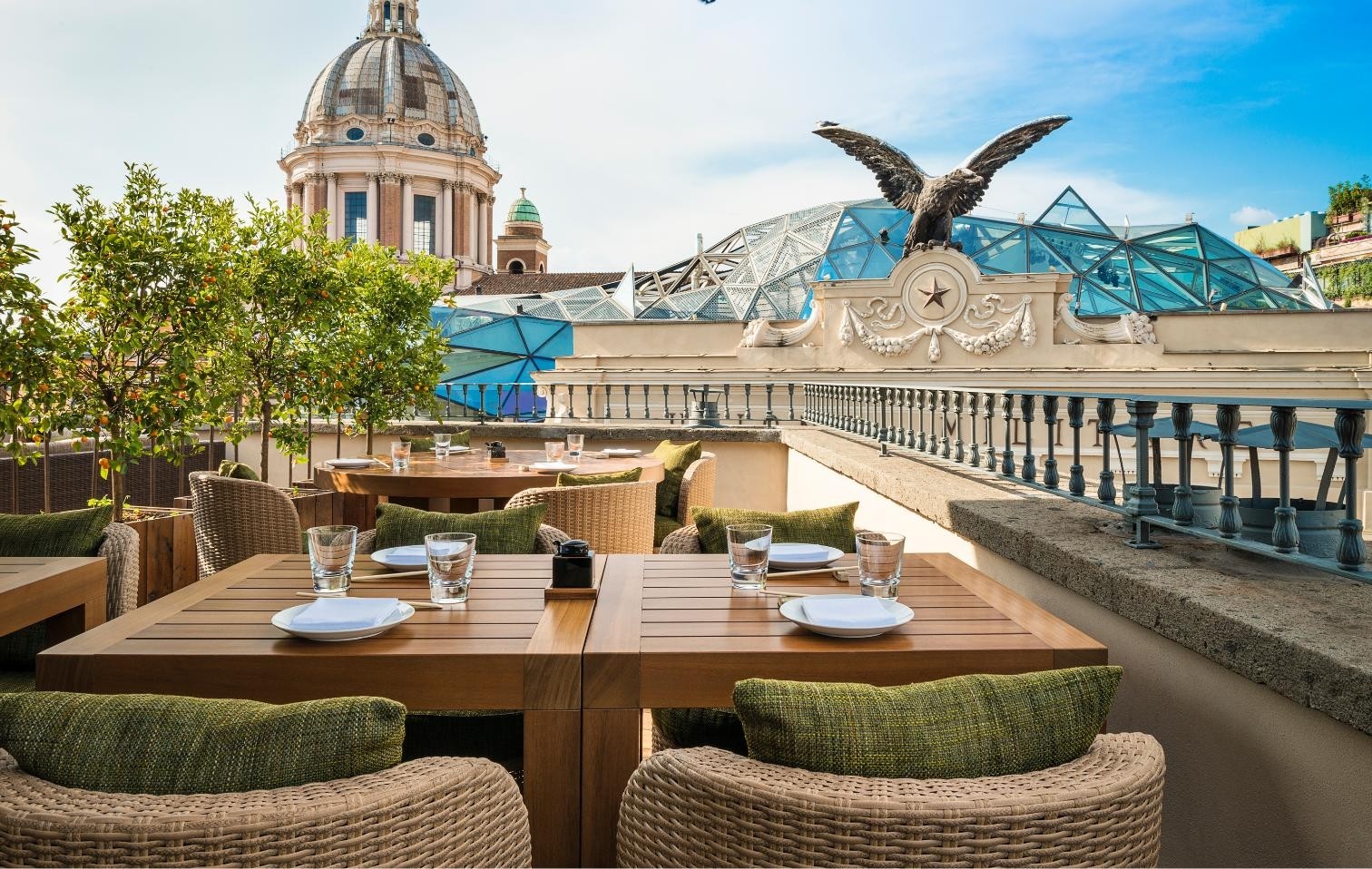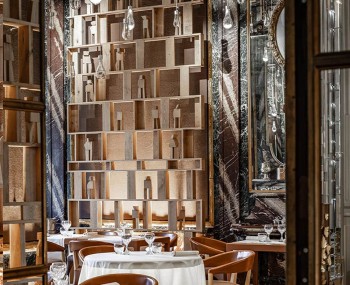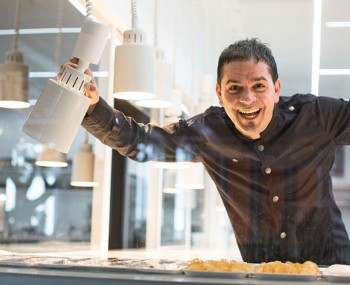In 2016, Rainer Becker and Arjun Waney chose Rome to import their concept of luxury and elegance in the service of high-level Japanese cuisine. Since then, Zuma has been setting trends in the Capital.
The Story
Zuma goes beyond being just a trendy hotspot. While it indeed attracts celebrities, entertainment icons, football stars, and influential personalities, Zuma represents a lot more. It embodies quality, elegance, and the promise of an immersive experience in a luxurious setting while enjoying excellent gourmet Japanese cuisine.

Founded in 2002 in London by chef Rainer Becker and Arjun Waney, the brand has gained unstoppable momentum ever since. Today, Zuma proudly boasts 13 locations spread across the globe. Zuma Rome, situated at Palazzo Fendi, opened its doors in 2016, choosing the capital city over Milan, which has traditionally been a hub for international activities and renowned brands in Italy.

This decision was guided by the city's strong tourist allure and culinary vibrancy, complemented by a genuinely unique location—a term often overused but fitting in this case. This partnership revolves around the essence of luxury.

The restaurant
Zuma restaurant is situated on the top floor of Palazzo Fendi, providing a breathtaking view of the Spanish Steps and the Barcaccia fountain. As you go up, you'll discover the terrace, offering a 360-degree panorama of Rome, where the aperitivo and post-dinner experience take center stage, all while serving up Japanese comfort food, sushi, and a more sophisticated menu.

Zuma, as the foundation of its ideology, takes inspiration from the concept of "izakaya", traditional Japanese taverns. It embraces the idea of communal dining, where dishes are thoughtfully crafted and portioned, particularly when it comes to main courses. Located at the entrance of the dining area is the robata, a customary Japanese charcoal grill where meat, fish, and vegetables are prepared. This grill stands out for its direct fire cooking method, which imparts a distinct and tantalizing smoky flavor to the dishes, far different from what we commonly associate with grilling.

Given its beauty and significance, the robata occupies a privileged position within the restaurant, Fascinating. Beyond the robata, there is an internal kitchen dedicated to preparing both hot and cold dishes, employing techniques such as baking and steaming. It is here that the beloved tempura, a frying technique that has captivated not only haute cuisine but also culinary enthusiasts at large, is masterfully executed. Finally, there's the sushi bar, where the three types of sushi take center stage: sashimi (raw fish), nigiri (a rice base topped with sashimi), and rolls, which further branch out into maki (seaweed on the inside of the rice) and hosomaki (seaweed on the outside).

I piatti
At Zuma, mixology is an essential part of the experience. The dinner begins with the "Passion Aroma": Gin Mare, pineapple, and passion fruit macerated for 24 hours, prosecco, and a lavender-infused leaf. It's a refreshing cocktail with a subtle acidity, perfect to accompany the shrimp tempura with togarashi, a Japanese chili similar in taste to paprika, and grated lime. Together with it, a citrusy mayonnaise featuring yuzu, lemon, and mandarin. The palate is prepared to embrace a predominance of acidic and floral notes that reappear in the following courses.


The second appetizer revolves entirely around freshness and spices. It consists of watercress salad, edamame (typical Japanese bean), baby cucumber, shiso leaf (Japanese basil), and a wasabi sauce dressing. Its simplicity offers the ideal introduction to interact with a cuisine that challenges traditional norms and concepts. The tasting takes a shift with seared tuna in ponzu sauce, braised onions, crispy garlic marinated in soy, and daikon, a chili-flavored radish. It's interesting how the tuna interacts with the daikon and ponzu, maintaining its delicate nature. Simultaneously, the marination of the garlic allows it to evolve in flavor and texture, becoming sweet, affable, and an integral part of the dish.


After the tuna, it's time for the salmon tartare, accompanied by its roe, chives, lotus flowers in tempura, and rice crackers. In this course, there's less technique but plenty of flavors, with one rule: place the tartare on top of the cracker for a complete bite. The presentation is one of the reasons why Zuma is synonymous with elegance. Next comes another crudités, this time it's yellowtail carpaccio with jalapeno, lime, and garlic marinated in soy. The fish is impeccably sliced, but as with the tuna, it's the combination of ingredients that surprises. The garlic turns crispy, while the jalapeno is carefully measured for the right amount of heat that leaves no room for compromises. In Japanese culture, spices are the extra touch, and protein serves as the means to showcase them.

We sample the sushi, presented in three variations and visually satisfying. Salmon sashimi, sea bass, and tuna belly. Yellowtail maki roll, mayo, and wasabi-infused tobiko. Hosomaki with salmon and avocado. The pieces showcase the quality of the ingredients, as seen in the tuna belly and sea bass, while the maki rolls are wonderfully light with a well-proportioned combination of fish and rice.Overall, it's sushi that elevates one of the oldest Japanese arts, crafted with discipline, precision, and quality of the raw ingredients. Remarkable. The restaurant's signature dishes take the spotlight in the last two courses. It starts with black cod, an iconic fish in Eastern cuisine, a variation of classic cod known for its distinctive color and superior flesh quality compared to European seas.

At Zuma, it's oven-baked, wrapped in hoba leaf (magnolia), with miso sauce, wasabi, orange and lemon juice. The black cod remains tender and juicy, enhanced by the sweet and tangy hints of miso and fruit. The second iconic dish of the restaurant is the spicy spiced beef fillet, with soy sauce, chili oil, garlic, sugar, and sesame garnish. The fillet is recommended to be cooked medium-rare, yet it remains tender and infused with umami flavor, a skill for which Japan is renowned. The interplay of soy, chili, and sugar creates fragrances that are hard to replicate, giving the fillet its distinctive character.

The dessert, designed for sharing, is the Deluxe Platter. It's a visually striking composition of desserts, including: chocolate fondant, caramel sphere, chocolate mousse choco bar, coffee miso ice cream, selection of exotic fruits, and vanilla cream sorbet. In this case, there are no rules to follow, one gets captivated by the sweet symphony and simply indulges.

Address
Zuma Rome, Palazzo Fendi
Via della Fontanella di Borghese, 48











